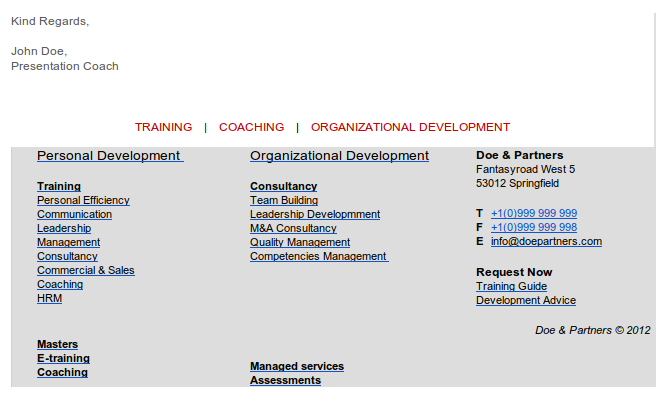Using Training Materials From Others
How do you create your training programme in no time at all? Just buy the training materials and use them to compose your own online training sessions inside your learning management system.
Every modern learning management system (lms) supports a universal standard for exchanging training materials: SCORM. Scorm stands for Shareable Content Object Reference Model, but you can forget about that (I always do). The really important thing about scorm is that you can create learning content or a training unit, package it in a scorm zip and export it to another lms. Of course, the reverse is also true: you can import somebody else’s scorm package as well.
But what do these words mean, learning content, training unit? Most scorm packages I have encountered so far, consist of fifteen, thirty to 120 minute sessions about a specific topic. The training participant logs in to your lms, opens the scorm package (just like any other online training activity, usually by hitting a button or clicking a link), does whatever is inside the package and receives a score (or at the very least a “completed” check mark).
Once the user clicks the link to the scorm unit, the scorm player takes over. The scorm player is the software inside the lms that “reads” the scorm package and “plays it back”. In the background, it does the presentation, evaluates any answers the participant may enter and computes the final score (if there is one). The score is transmitted to the lms, which stores it together with the name of the user for future reference (e.g. to make it available in a grade book).
How does this differ from using a training activity provided by the lms itself (e.g a quiz or test)? Well, it doesn’t until you would want to export the activity to another training platform. Okay, I told you to forget what scorm stands for, but one part is important: the shareable part. A scorm package can be shared across all e-learning systems which support the standard (and there are a lot of those out there).
Practical Note on Using Scorm
Your lms should already contain a scorm player, but I’m going to tell you to get another one. This way, in case of any problems with a scorm package you can always verify that the problem resides with the scorm package and not the settings of your lms. Simply try to play the scorm package in your standalone scorm player. If the problems persist, there’s probably nothing wrong with your lms’ settings.
Download SCORM training materials
So where do you find scorm trainings? Here are a few online markets where you can download scorm packages but also offer your own for sale.
Post comment


